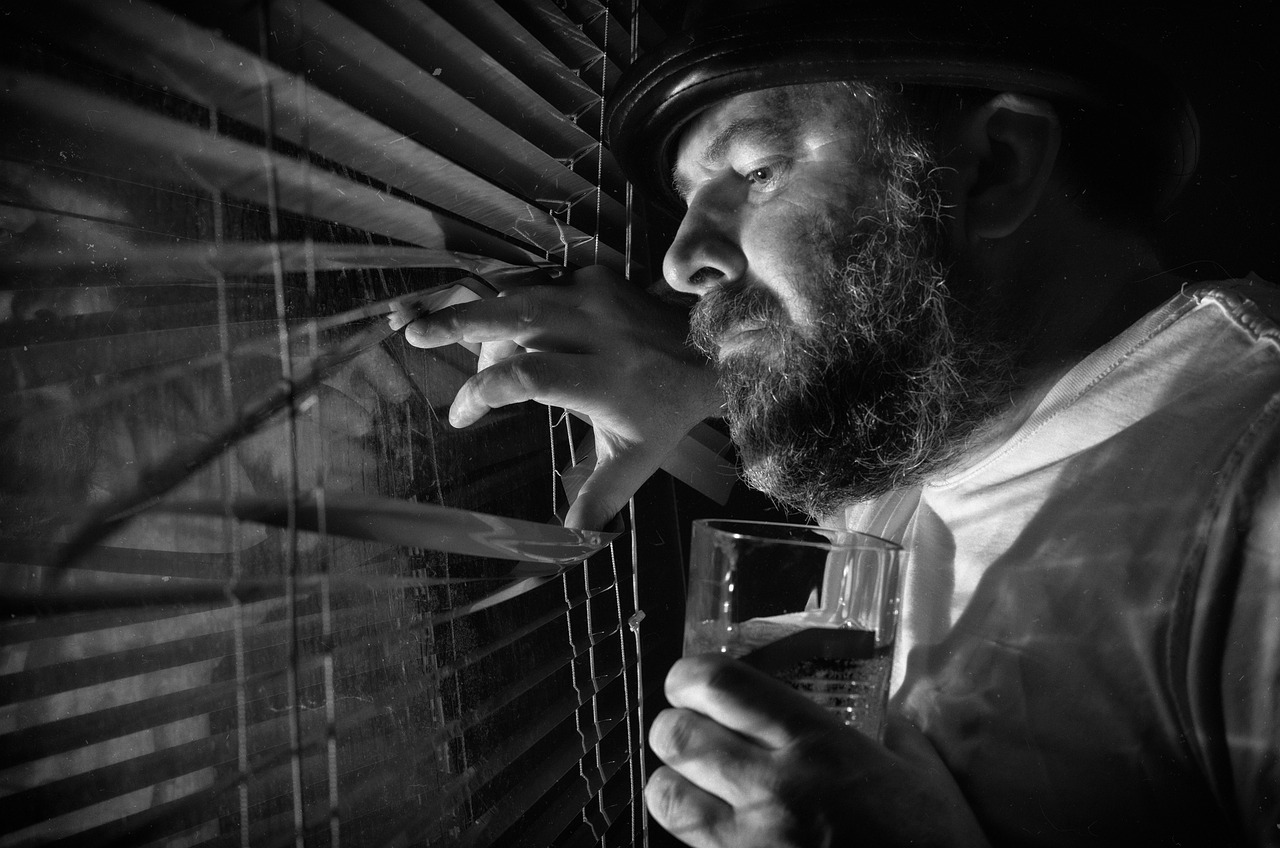11 Ch. 11 Crimes against Persons
Jeff Bry
Ch. 11
Crimes Against Persons
Introduction
When people think about issues that make them fearful of crime, crimes against people are commonly cited. The potential to be victimized causes stress and anxiety for many people, there is also a fascination with this phenomenon cited in the True Crime and other cultural phenomena regarding crime. In this chapter we will examine crimes against persons, including violent crimes. We first need to examine definitions of instrumental and expressive violence to differentiate differing motivations.
Instrumental Violence: Violence directed at strangers for personal or financial gain.
-Armed robbery, burglaries, etc.
-There is some practical benefit to committing the crime, including money, items, status, etc.
Expressive Violence: Crimes that are emotion based, venting rage, anger or frustration.
-School shootings could be an example.
-Committing acts of violence as a response to situational and structural factors such as poverty, bad neighborhoods, etc.
-Responding to intolerable situations/treatment such as being abused (domestic violence, rape, child abuse).

In a Students Own Words:
Question: Why do you think people fear crime?
People fear violent crime when they hear about it. If you never heard about or saw violent crime you wouldn’t fear it because you don’t know about it. The media abuses this. Broadcasting rare crimes that don’t occur that frequently within a society will cause fear. People fear it because “if the media is broadcasting it, it must be of epidemic proportions”. 14 out of 1000 persons above 18 years old get stalked yearly. This is unreasonable to worry about frequently because the odds are so low.
Crime Typologies
Crime typologies are categories discussed by criminologists to identify crime by a set of defined characteristics. Generally, these characteristics include aspects of crime including (but not limited to) victim behavior, offender motivation, legal categories, situational factors of the criminal act or event and specific aspects of the offender themselves. When examining crime typologies, one is able to decipher and understand the nature of crime based upon each typology. For example, the typology for murder will look quite different from the typology for shoplifting. In this chapter we will examine typologies specific to crimes against persons.
Murder/Homicide
Murder and homicide are often used interchangeably, they are actually distinct definitions. Murder is the act of willfully killing someone in an unlawful manner. Homicide may be murder, but it may also be committed in self-defense or in other justifiable and/or legal manner. Often court systems will use the term criminal homicide to make this distinction, where a criminal homicide is causing the death or another without legal cause or excuse.
According to the UCR/NIBERS, in 2022 there were 22,000 people murdered, which results in about 6.9 per 100,000 people. To put this in perspective, in 2020 there were approximately 21,570 murders, with a rate of 6.5 per 100,000 people. (Brennan Center for Justice) (FBI Uniform Crime Reporting (UCR)).
Here are the murder statistics for previous years according to the UCR:
2020: Approximately 21,570 murders, with a rate of 6.5 per 100,000 people.
2010: About 14,722 murders, with a rate of 4.8 per 100,000 people.
2000: Roughly 15,586 murders, with a rate of 5.5 per 100,000 people.
1990: Around 23,440 murders, with a rate of 9.4 per 100,000 people.
1980: Approximately 23,040 murders, with a rate of 10.2 per 100,000 people
1970: There were 16,000 murders, with a rate of 8.3 per 100,000 people.
1950: There were approximately 7,130 murders, with a rate of 4.6 per 100,000 people.
1930: There were approximately 8,920 murders, with a rate of 7.1 per 100,000 people (FBI Uniform Crime Reporting (UCR)) (Brennan Center for Justice).
As you can see the number of murders and the murder rate is lower in 2022 than it was in either 1980 or 1990. People tend to assume crime (and serious crime) keeps increasing every year (crime gets worse), these statistics show the cyclical nature of crime and specifically murder. The murder rate in 1930 was slightly higher than the murder rate in 2020. Researcher often look for trends or events that may increase or decrease crime and specifically (in this case) the murder rate. Drugs, gangs, social and political turmoil may affect the murder rate in specific time frames.
In terms of murder, first-degree murder takes the perspective the murder was planned, including something referred to as malice aforethought, meaning the killing was planned and premeditated. Second-degree murder is often viewed as a “crime of passion”, where the decision to kill and the killing happen almost simultaneously. For a murder to be second-degree, the killing must generally follow insults or abuse, where people “react” to some stimuli. If people have time to think about the outcome of killing someone that demonstrates premeditation, which would generally be first-degree murder.
Third-degree murder refers to homicides that result from someone’s unlawful or negligent actions. Common terms for third-degree homicide often include manslaughter, negligent homicide, negligent manslaughter and involuntary manslaughter. An example of negligent homicide could include a person driving under the influence who hits and kills a pedestrian.
Explanations for Murder/Homicide
The Subculture of Violence Thesis Wolfgang and Ferracuti (1967) take the stance certain groups have values and norms that are more conducive to violence. These violent subcultures view acts of violence as being justified in dealing with problems, or gaining an advantage in situations. The perspective violence is a matter of learning from culture (values and norms) and accepted and supported by the culture is a key attribute of this theory. Elijah Anderson (1999) with his pivotal work Code of the Street discusses a similar perspective, concentrating on inner-city neighborhoods. Anderson (1999) suggests this “code” justifies violence (and threats of violence) to govern individual and neighborhood behavior. This code is taught and reinforced at a community level.
Katz (1988) discusses the “sneaky thrills” of committing crime, arguing that the subculture of violence can be driven by the seductive appeal of committing crimes. Crime is easier than work, it is also more engaging and entertaining. Crime does not necessarily demand a schedule; people can commit crime when they are in need and/or see an opportunity. Messerschmidt (1993) adds the variable of masculinity into the discussion of the subculture of violence. Messerschmidt (1993) suggests violent behavior can be a method for males to assert their masculinity in certain cultural context.
The Victim-Offender Relationship regarding homicides often focuses on understanding the relationship (dynamics and motivation) behind homicides that occur among people in pre-existing relationships. These relationships include family, friends, or acquaintances. These homicides are referred to as primary homicides, or homicides committed where the victim and offender know each other. Wolfgang (1958) found that 25% of all homicides were between family members, with interesting differences based upon gender. Females were far more likely to be both offender and victim in this category of primary homicide, killed by or killing family members. Males were more likely to be killed by friends and acquaintances than family members, but when a male was killed by a female there was a good chance the offender was his spouse. Fagan and Browne (1994) found physical aggression and abuse between spouses is a strong correlate to risk of homicide. Secondary homicides are homicides committed between strangers.
Victim Precipitation is another perspective on the cause of homicide. Victim precipitation in homicide refers to situational factors where the victim is thought to have provoked or contributed to the violent encounter that led to their death. Wolfgang (1958) in his study of homicides in Philadelphia, found 26% of homicides he examined involved victim precipitation. His findings concluded in the majority of these cases involved scenarios where the victim initiated the violence or provoked the offender in some manner. Luckenbill (1977) found situations involving “situated transactions” where the interactions between victim and offender escalated to lethal violence. Luckenbill (1977) found victim precipitation often plays a role in escalation of interactions. Wolfgang and Ferracuti (1967) found that in subcultures supportive of violence that victim precipitation is more likely. They theorize that in these subcultures cultural norms can affect the likelihood of victim precipitated homicide.
Sibling Offenses refers to offenses that initiate a homicide, but where a homicide was not the intention. Examples could be an attempted robbery where the victim resists and the offender shoots and kills the victim. The offender did not intend to kill the victim in the act of robbing them, but the end result is a homicide.
Weapon Use is one other important category regarding homicide. According to the Uniform Crime Reports (2021) in 2020 firearms were used in approximately 77% of all homicides, with handguns being most commonly used. Knives or other cutting instruments were used in about 10% of homicides. Blunt objects, hand and feet and all other weapons accounted for the other 13% of weapons used in homicides. The Center for Disease Control and Prevention’s (2019) National Violent Death Reporting System (NVDRS) closely tracked the Uniform Crime Reports data, finding 74% of homicides were committed using firearms. As firearms are so predominantly associated with homicide and death, statistics are highlighted below including suicides, accidental deaths and deaths from legal intervention.
|
Year |
Total Gun Deaths |
Gun Homicides |
Gun Suicides |
Gun Accidental Deaths |
Deaths from Legal Intervention |
|
2020 |
45,222 |
19,384 |
24,292 |
535 |
611 |
|
2010 |
31,672 |
11,078 |
19,392 |
606 |
596 |
|
2000 |
28,663 |
10,801 |
16,586 |
776 |
500 |
|
1990 |
37,155 |
18,253 |
18,885 |
1,416 |
601 |
|
1980 |
34,514 |
15,009 |
17,352 |
1,618 |
535 |
|
1970 |
23,500 |
10,588 |
11,622 |
2,928 |
362 |
|
1950 |
12,397 |
6,081 |
5,548 |
3,019 |
289 |
|
1930 |
8,755 |
3,487 |
4,431 |
2,622 |
215 |
Summary and Observations:
Observations
Trends Over Time: The total number of gun deaths has generally increased over time, with significant increases in recent decades.
Homicides: The number of gun homicides peaked in the 1990s but remains high, especially in 2020.
Accidental Deaths: Accidental gun deaths were higher in earlier decades but have decreased over time, possibly due to better education, safer gun storage practices, and improvements in firearm safety technology.
Legal Intervention: Deaths from legal intervention have remained relatively stable but are a small percentage of the total gun deaths
Data Sources:
Centers for Disease Control and Prevention (CDC) reports
FBI Uniform Crime Reporting (UCR) Program
National Center for Health Statistics (NCHS) reports

Picture source pixabay.com
These statistics provide a snapshot of the impact of gun violence and accidents over nearly a century, illustrating the evolving nature of this significant public health issue.

In a Students Own Words:
Question: What do people think about violent crime?
The fear of violent crime often seems bigger than the actual risk. This fear can come from various sources like media portrayal of crime, personal experiences, or societal attitudes. News outlets often focus on violent crimes because they grab attention, which can skew our perception of how common they actually are. In. reality, violent crimes are less common compared to other types of crime, like property crimes. But it’s natural for people to be more affected by the idea of violence since it poses a direct threat to personal safety. The actual risk of being a victim can depend heavily on factors like where you live, your lifestyle, and the time of day.
Alcohol and Drug Use is another common correlate of homicide. The NVDRS (2019) found that in 31% of homicide victims tested positive for alcohol, and around 25% tested positive for illicit drugs such as cocaine, opioids or marijuana. Felson and Staff’s (2010) research explored the effects of alcohol intoxication and its affects on violence, including homicide. The author’s concluded alcohol significantly impairs individual judgement and increases aggression and violence. The National Institute on Alcohol Abuse and Alcoholism (NIAAA) reported on their fact sheet that alcohol is a factor in 40-50% of all homicides.

Picture source pixabay.com
Rape
Rape is a topic that has seen dramatic change over the decades. As you can see by the statistics provided, rape appears to have severely increased following the 1970’s. Some historical context is important regarding this topic and issue.
2020: 126,430 reported rapes, with a rate of 38.4 per 100,000 inhabitants.
2010: 85,593 reported rapes, with a rate of 27.5 per 100,000 inhabitants.
2000: 90,186 reported rapes, with a rate of 32.0 per 100,000 inhabitants.
1990: 102,560 reported rapes, with a rate of 41.1 per 100,000 inhabitants.
1980: 82,990 reported rapes, with a rate of 36.8 per 100,000 inhabitants.
1970: 37,990 reported rapes, with a rate of 18.7 per 100,000 inhabitants.
1950: 4,190 reported rapes, with a rate of 2.6 per 100,000 inhabitants.
1930: 3,290 reported rapes, with a rate of 2.1 per 100,000 inhabitants. (FBI Uniform Crime Reporting (UCR)) (FBI Archives).
According to the FBI Archives (FBI Archives) the 1950’s and 1960’s were a time of “initial awareness” when it came to rape. Societal attitudes were generally against the victim during these decades, with victim blaming and societal stigma against the victim being significant. During these decades rape prosecution was extremely difficult, requiring proof of physical resistance and corroboration from witnesses. The 1970’s began the period of reform pertaining to rape and rape laws. This change was partially a result of the Feminist Movement, which brought attention to sexual violence and advocated for change systemically towards rape and rapists. The result were establishment of Rape Crisis Centers, also states began to change their rape laws. Physical resistance was no longer required, also victim testimony was found to be sufficient evidence.
Rape and rape laws continue to evolve, including cultural movements such as the “Me Too” movement https://metoomvmt.org/. Rape is still a complicated topic and issue, one that appears to still be misunderstood and underreported.
Categories of Rape
Rape is generally acknowledged as non-consensual sexual contact (historically intercourse) committed by force, threat of force, or other forms of coercion. Inability to give consent due to age, mental incapacity or intoxication is generally viewed as rape as well.
Statutory Rape involves sexual contact with a person who is below the age of consent. The age of consent will vary by jurisdiction.
Marital Rape involves non-consensual sexual contact between spouses. Marital rape is not acknowledged in certain countries, it has only in recent decades been acknowledged and prosecuted in the US.
Date Rape involved sexual contact committed by someone the victim knows, generally a friend, neighbor or as the term suggests a date. Date rape commonly involves drugs or alcohol as a method to incapacitate the victim, manipulation and coercion are often methods of the offender.
Acquaintance Rape is a rape by someone the victim knows. Similar to date rape, this type of rape may include “grooming” techniques and occur in settings known to the victim (work, school, neighborhood, home, etc.).
Gang Rape is a rape involving multiple offenders. In these instances the victim is more likely to resist, with may result in extreme violence and injury to the victim.
Theories of Rape
The Feminist Perspective is broad and diverse, but tends to be discussed in the following contexts:
-Power and Control: Rape is not viewed as only a sexual act but is viewed as an extension of power and control. Rape is a means to exert this power and control over the victim, and display dominance. Victims are often women and other marginalized populations.
-Patriarchal Structures: Rape is the outcome of patriarchy, social norms and social institutions systematically provide privilege to men and subordinate women. This structural inequality creates environments more conducive and tolerant of sexual violence against women.
-Cultural Attitudes: Rape is the outcome of a culture that objectified women and conduct victim-shaming, where women are fearful to reports acts of sexual violence. These cultural attitudes create an environment where rape is normalized, and victims are not believed or are blamed for the assault.
The Psychopathological Perspective of Rape Groth (1979) takes the perspective that rape is based on two primary assumptions.
-Rape is the result of idiosyncratic mental disease.
-Rape often includes an uncontrollable sexual impulse.
Groth (1979) argues rape is entrenched in aspects of “power” and “anger.” While there are mixed reviews on the explanatory power of this perspective, it is still cited as a possible theoretical explanation of rape.
The Integrated Theory of Rape Baron and Straus (1989) discusses an “integrated theory’ of rape, by blending competing theories into one integrated theory of rape. Baron and Straus (1989) combine aspects of feminist, social learning, routine activities and social integration theories. Integrated theoretical perspectives include:
Structural and Cultural Influences and Rape:
Structural Factors: The role of structural factors such as economic inequality and social disorganization. Communities with a high amount of poverty and unemployment are more likely to have higher instances of rape due to increased stress, frustration and weakened social control.
Cultural Norms: Cultural norms that support traditional viewpoints of masculinity and femininity play a tremendous role in fostering rape. Societies that support male dominance and aggression while devaluing women and supporting female submission create environments were rape is more common.
Social Learning Perspective of Rape:
Behavior Modeling: Using social learning theory, individuals learn violent and aggressive behavior, including acts of sexual violence. These acts are learned by observing and imitating others, especially when violent behaviors are rewarded or go unpunished. Television, media and other cultural portrayals of sexual violence and aggression may also be modeled.
Reinforcement: Any behavior that is rewarded (directly or indirectly) is likely to be repeated. In societies where rape is not punished or where offenders receive minor sentences the behavior is reinforced.
Routine Activities and Rape:
Opportunity Structures: Baron and Straus also draw from routine activities theory, which posits that the likelihood of rape increases when there is a convergence of motivated offenders, suitable targets, and lack of capable guardianship. For example, social situations such as parties or bars where individuals may be intoxicated can create opportunities for rape to occur.
Victim Vulnerability: Factors that make individuals more vulnerable to being targeted, such as being alone, intoxicated, or in unfamiliar settings, are also considered.
Social Disorganization:
Community Breakdown: Social disorganization theory suggests that communities with weak social institutions, such as family, education, and law enforcement, experience higher rates of crime, including rape. In such environments, social norms are less likely to be enforced, and deviant behavior, including sexual violence, becomes more prevalent.
The Evolutionary/Biological Perspective takes the perspective that natural selection and “sexual selection” are evolutionary perspectives of human beings. Thornhill and Palmer (2000) argue rape is a matter of evolutionary adaptation. They argue throughout history males that were predisposed to rape might have possessed reproductive advantages by increasing the odds of passing their genes when consenting opportunities were limited. This perspective assumes rape is a behavior that could have been selected for under certain environmental pressures because it increases reproductive success, although there is a social and personal loss to the victim. Thornhill and Palmer (2000) go on to state rape is more likely to be committed by males who are unable to secure mates through conventional means. They argue that men with lower socio-economic status or those who lack resources and status may view rape as a reproductive strategy. This theory has been criticized stating it “normalizes” or minimizes responsibility to the offender for rape.
Child Sexual Abuse
Child Sexual Abuse is a broad topic including a variety of civil and criminal offenses in which an adult engages in (or exploits) a child in an sexual manner. Child sexual abuse includes sexual activity with a minor, exploitation of a minor for sexual gratification, or exploiting a minor for sexual purposes for profit. Child sexual abuse is viewed as a repugnant, deplorable crime which finds almost no support in society. These offenses are often underreported, partly due to the potential young age of the victim and/or inability to report. Even if families or loved ones discover the abuse, they may be hesitant to report this abuse to authorities. To add to this problem, use of the internet, social media and other online platforms have made this issue more severe and accessible in recent decades. Some statistics from Crimes Against Children Research Center show:
1 in 5 girls and 1 in 20 boys is a victim of child sexual abuse.
Self-report studies show that 20% of adult females and 5-10% of adult males recall a childhood sexual assault or sexual abuse incident.
During a one-year period in the U.S., 16% of youth ages 14 to 17 had been sexually victimized.
Over the course of their lifetime, 28% of U.S. youth ages 14 to 17 had been sexually victimized.
Children are most vulnerable to CSA between the ages of 7 and 13.
https://victimsofcrime.org/child-sexual-abuse-statistics/
Child sexual abuse offenders are not necessarily easy to identify. Some of the demographic characteristics include being male, having a fixation on children or young people, sexual abuse and victimization as a child themselves. These characteristics should be viewed in context however, as most people who were abused as children do not abuse children as adults. There may be reporting error and/or minimizing of female child sexual abuse also, as people may not view a female child sexual “abuser” in the same manner as a male child sexual “abuser.”
Robbery
Robbery is counted as a violent crime as it generally involves threats of force or use of force in its commission. Robbery is an act where the offender actively attempts to take the property of another. Robberies can happen almost anywhere, with robberies occurring on the street often being referred to as mugging. According to a report from the US Sentencing Commission (2022), robbery offenders are a small but increasing proportion of the federal criminal caseload (increase from 1.9 percent to 2.3 percent from 2012 to 2021). Hobbs Act robbery, carjacking and bank robbery accounted for a majority of robbery convictions over a 10-year period. Robbery offenders typically are male (89%), racial minorities, have criminal histories and offending patterns that are more extensive and serious than other violent offenders. Robbery offenders are prone to use violence and threats of violence using weapons and threats of use of force against victims according to the US Sentencing Commission (2022). Findings include 78% of robberies involve dangerous weapons, with firearms being most commonly used. A whopping 90% of robberies involved a threat of physical force against the victim, and in 26% of cases physical force was used against the victim. Victims sustained some type of bodily injury in 12% of robberies. All statistics are from the US Sentencing Commission (2022).
|
Year |
Total Robberies |
Robbery Rate per 100,000 |
|
2020 |
243,600 |
73.9 |
|
2010 |
367,832 |
119.3 |
|
2000 |
408,016 |
144.0 |
|
1990 |
639,271 |
256.3 |
|
1980 |
565,836 |
251.1 |
|
1970 |
349,860 |
171.5 |
|
1950 |
26,855 |
17.3 |
|
1930 |
9,268 |
7.3 |

Image source pixabay.com
Assault
Assault is the most common type of violent crime. Assault also is a “beginning” or starting point for more serious incidents of violence. As a definition assault is broad and includes various types of assault including sexual, vehicular, domestic, aggravated battery, assault bodily injury and misdemeanor assault. We will discuss “aggravated” and “simple” assault.

Picture source pixabay.com
Aggravated Assault is defined as an attack for the purpose of inflicting severe bodily injury, often using a weapon or means to cause severe bodily injury or death. Most commonly aggravated assault uses firearms, knives or other weapons that can cause severe injury or death. Aggravated assault is commonly correlated to personal disagreements and disputes, gang related activities and robberies. The potential of a stranger assault exists with aggravated assault. Being in the “wrong place at the wrong time” and being victimized for possessions, may cause great fear and worry for these types of assaults. Muggings would be a potential example of these types of stranger assaults.
|
Year |
Total Aggravated Assaults |
Aggravated Assault Rate per 100,000 |
|
2020 |
921,505 |
279.7 |
|
2010 |
780,231 |
252.3 |
|
2000 |
910,744 |
324.0 |
|
1990 |
1,122,367 |
451.9 |
|
1980 |
854,103 |
379.5 |
|
1970 |
229,480 |
112.4 |
|
1950 |
154,320 |
102.0 |
|
1930 |
28,771 |
23.3 |
Simple Assault is defined as attacks without a weapon that results in minor injuries and/or threats of harm. Simple assaults do not involve severe bodily harm. Most commonly incidents of simple assault include pushing, hitting or slapping, punching of victims, but also includes verbal threats of violence without use of a weapon. Simple assaults are often interpersonal disputes between parties over personal disputes, minor altercations and domestic conflict. Injuries in simple assaults are generally less severe than aggravated assault, injuries do not pose a threat to life or overall long-term health. Family and personal relationships may face issues and complications, ending in the potential for simple assault. Simple assaults are commonly committed against known victims and the potential exists to escalate to aggravated assault. Domestic violence could be a good example, it may begin as a simple assault and escalate to aggravated assault. Most commonly the reported victim in domestic violence is female.
|
Year |
Total Simple Assaults |
|
Simple Assault Rate per 100,000 |
|
2020 |
4,475,577 |
1,358.3 |
|
2010 |
3,752,944 |
1,214.8 |
|
2000 |
4,043,770 |
1,437.0 |
|
1990 |
4,496,877 |
1,810.0 |
|
1980 |
2,579,040 |
1,144.4 |
|
1970 |
1,148,120 |
562.3 |
|
1950 |
518,090 |
342.4 |
|
1930 |
135,135 |
109.5 |
Stalking
According to the Victims Connect website https://victimconnect.org/learn/types-of-crime/stalking/, stalking is defined as “a course of conduct directed at a specific person that would cause a reasonable person to feel fear. Unlike other crimes that involve a single incident, stalking is a pattern of behavior. It is often made up of individual acts that could, by themselves, seem harmless or noncriminal, but when taken in the context of a stalking situation, could constitute criminal acts.” Stalking can be worrisome for the victim and may be complicated for the offender. The offender may not know they are harassing or scaring the victim, which makes stalking a complex crime. Attached below are some of the patterns of behavior according to the Victims Connect website which may constitute stalking https://victimconnect.org/learn/types-of-crime/stalking/.
-Repeatedly calls your phone, including hang-ups.
-Follows you and shows up wherever you are.
-Sends unwanted gifts, letters, texts, or emails.
-Damages your home, car, or other property.
-Monitors your phone calls or computer use, possibly through spyware.
-Uses technology, like hidden cameras or global positioning systems (GPS), to track where you go.
-Drives by or lingers near your home, school, or work.
-Threatens to hurt you, your family, friends, or pets.
-Performs other actions that control, track, or frighten you.
-Uses other people to try to communicate with you, like children, family, or friends.

Picture source pixabay.com
Hate Crimes
In 1990 the US Congress passed the Hate Crimes Statistics Act, which required the Attorney General to collect data “about crimes that manifest evidence of prejudice based on race, religion, sexual orientation, or ethnicity.” https://ucr.fbi.gov/hate-crime/2010/resources/hate-crime-2010-about-hate-crime This act made it possible to track the frequency and patterns in hate crime statistics and to observe changes to these statistics over time. Most recent statistics (2022) (for single-bias incidents) included the following frequencies. As is shown in the table below a majority (59.1%) of single-bias incidents were directed at race/ethnicity/ancestry. This is followed by religion (17.3%) and sexual orientation (17.2%). Actual reported numbers are shown below these statistics titled “Bias Motivation Categories.”
Regarding hate crimes, it is important to identify the theory that not all hate crimes are reported, also that crimes that occur may not be counted as a hate crime. For an act to be considered a hate crime at the federal level, a crime motivated by bias (race, color, ethnicity, religion, national origin, sexual orientation, gender, gender identity, disability) must be committed. If not crime is committed but there is an act of prejudice, this act would be labeled Bias or a Hate Incident. https://www.justice.gov/hatecrimes/learn-about-hate-crimes
|
Race/Ethnicity/Ancestry |
59.1% |
||
|
Religion |
17.3% |
||
|
Sexual Orientation |
17.2% |
||
|
Gender Identity |
4.0% |
||
|
Disability |
1.5% |
||
|
Gender |
0.9% |
||
|
Bias Motivation Categories |
2022 |
2021 |
|
|
Race/Ethnicity/Ancestry |
6,567 |
6,643 |
|
|
Religion |
2,042 |
1,590 |
|
|
Sexual Orientation |
1,944 |
1,707 |
|
|
Gender Identity |
469 |
342 |
|
|
Disability |
171 |
152 |
|
|
Gender |
95 |
96 |
|
|
Total |
11,288 |
10,530 |
|
From the Justice Department web site, estimates of 250,000 hate crimes were committed each year between 2004 and 2015 in the US. Most of these hate crimes were not reported to law enforcement. https://www.justice.gov/hatecrimes/learn-about-hate-crimes

Picture source pixabay.com
Mass or “Spree” Killers
Mass or Spree Killers are killers who kill more than one person potentially in more than one location. According to the FBI (2020) Mass killers are single incident killers, killing their victims in a single incident and in one location. Their goal is to kill as many people as possible in a short time period. They tend to target public places such as schools, workplaces and public venues. Mass killers meticulously plan their attacks, including location, time and weapons needed. Mass killers typically have suicidal tendencies and expect to die during the attack, either by suicide or police intervention. Mass killers are often motivated by a personal vendetta or grievance and have desire for notoriety and media attention. Many mass killers suffer from psychological issues, such as severe depression and/or psychosis. Many mass killers have a history of social isolation and difficulty in social or professional integration. Examples include:
-Columbine High School (1999): Eric Harris and Dylan Klebold killed 13 people and injured 24 in a planned attack on their school, driven by a desire for revenge against perceived bullies and a fascination with violence.
-Las Vegas Shooting (2017): Stephen Paddock opened fire on a concert from his hotel room, killing 60 people and injuring over 400. His motives remain unclear, but the attack was meticulously planned.
-Orlando Nightclub (2016): Omar Mateen killed 49 people and wounded 53 in a shooting at Pulse nightclub. His attack was driven by a combination of personal issues and extremist ideology.
Spree Killers commit multiple murders in more than one location in a short period of time. The killing spree is usually within days or weeks of each other. According to the FBI (2020) spree killers are not planful, they tend to act impulsively and not make a plan. Spree killers tend to have high mobility, moving to different locations to kill people. Spree killers often begin with a “triggering event”, which leads to an escalation of violence. Many spree killers feel a sense of desperation in their personal lives or social circumstances. Spree killers are more inclined to target specific groups or individuals and to have personal vendettas. Examples include:
-Andrew Cunanan (1997): Cunanan’s killing spree lasted three months, during which he murdered five people, including fashion designer Gianni Versace. His motives included personal vendettas and financial desperation.
-Charles Starkweather (1958): Over two months, Starkweather killed 11 people in Nebraska and Wyoming, often with his girlfriend Caril Ann Fugate. His motives were rooted in personal dissatisfaction and a desire to rebel against societal norms.
-John Allen Muhammad and Lee Boyd Malvo (2002): Known as the D.C. snipers, they killed 10 people and injured three over three weeks in the Washington, D.C., area. Their motives included personal grievances and a desire to instill fear.
Serial Killers
Serial Killers are murderers who generally kill over a period of time, generally killing one person at a time. Serial killers tend to specialize in their killing, concentrating on certain characteristics of victims (age, race, body build, hair and eye color, students, prostitutes, professional people) to fulfill their needs through killing. Many have something that has been referred to as a “dark need” or “dark passenger”, meaning a compulsion to kill that pushes them to kill at certain times. This need may be satisfied for years for some killers, others need to kill more frequently to gain their “release” from the dark “need or passenger.” This time period is also referred to as the “cooling off period.” Many serial killers know what they are doing is wrong, they also understand killing is risky from a legal standpoint. According to Hickey (2015) serial killers are ritualistic and follow specific patterns of killing. Many prefer a “personal” touch with killing, so they prefer strangulation, stabbing or other methods that allow control and enhance pleasure for the killer. If aspects of their ritual or preferred method of killing are missed, the killer may not achieve “release” or the “cooling off period.” Serial killers often kill in a specific geographic area, although some have been known to move frequently.
In terms of psychological patterns of serial killers, according to Ressler and Shachtman (1992) and Hickey (2015) many have childhood trauma which contributes to their killing. This trauma may include physical, emotional and/or sexual abuse, which contributes to their violent tendencies. Many serial killers display patterns of antisocial personality disorder, lacking empathy and having very little regard for social and cultural norms. They may be superficially charming and manipulative, but many have a difficult time building and maintaining relationships. Hickey Ressler and Shactman (1992) and Hickey (2015) discuss issues of fantasies and control in their killings. Many serial killers have elaborate fantasies about killing, which some assume a “perfect kill” will stop their cycle of killing. As the killer obsesses and fantasizes about their kill constantly, no kill is typically as good as their fantasies.
As many serial killers feel inadequate, their killing provides them an avenue to exert power and control. Asserting dominance over others is important to them, as is the need for sexual gratification. Many serial killers have a strange perspective regarding killing and sexual arousal and gratification. Some like Jeffrey Dahmer included sexual acts with the corpses of people he had killed. Mission oriented killers are also somewhat common. Mission oriented killers believe it is their job to rid the world of certain people (i.e. prostitutes), so killing to them is somewhat good and noble. Visionary killers are often the most unpredictable, killing because they hear or see voices or visions to kill. David Berkowitz or the “Son of Sam” killer is a good example of this.
The need to kill seems to take a compulsive and addictive track with serial killers. As discussed by Hickey (2015), there appears to be a psychological compulsion to kill in many serial killers. This overwhelming compulsion to kill builds over time until it becomes described as a “need” that becomes irresistible. Hickey (2015) also suggests the act of killing itself may have addictive qualities, providing a sense of a “high” or euphoria to the killer. This may make it difficult for the serial killer to stop killing, even if the risks of doing so become high. Over time the severity and frequency of killing can increase, which increases the risk of detection and making a mistake for the serial killer. Like a drug, killing may only provide a brief relief or respite, the need to kill again may come at shorter intervals for the killer (FBI’s Behavioral Analysis Unit, 2010).

Picture source pixabay.com
Many serial killers are adaptable and live in “plain site” in society. They may come across as a bit strange or lacking in social skills, or perhaps they are congenial and friendly like Ted Bundy. Many work jobs, have family or other commitments they satisfy consistently and attempt to portrait themselves as upstanding citizens.
Attached are links to websites highlighting serial killers. Please feel free to examine this website and seek out what interests you. Some killers of note to investigate would include:
-Ted Bundy
-BTK Killer
-Green River Killer
-Ed Gein
-John Wayne Gacy
-Eileen Wuornos
-Jeffrey Dahmer
https://serialkillersinfo.com/
Summary
This chapter is very dense, covering various aspects of crimes against persons. As the statistics demonstrate, violence and crimes against persons are a relatively consistent phenomenon in US society. These offenses and patterns of offenses change from year to year and decade to decade, however the perspective that crimes against persons are constantly increasing are statistically not accurate. Crimes against persons are a significant area of worry for many citizens, with fear of violence being a consistent concern for many US citizens.
References
Anderson, E. (1999). Code of the street: Decency, violence, and the moral life of the inner city. New York: W.W. Norton & Company.
Brownmiller, S. (1975). Against our will: Men, women, and rape. New York: Simon & Schuster.
Burgess, G. H. (2007). Assessment of rape culture in a college community. Affilia: Journal of Women and Social Work, 22(3), 311-320.
Centers for Disease Control and Prevention (CDC). (2019). National Violent Death Reporting System (NVDRS).
Crenshaw, K. (1991). Mapping the margins: Intersectionality, identity politics, and violence against women of color. Stanford Law Review, 43(6), 1241-1299.
FBI. (2020). Active shooter incidents in the United States.
Federal Bureau of Investigation. (2010). Serial murder: Multi-disciplinary perspectives for investigators.
Federal Bureau of Investigation (FBI) Uniform Crime Reporting (UCR) Program. (2021). Crime in the United States 2020: Expanded homicide data table 8: Murder victims by weapon, 2016-2020.
Felson, R. B., & Staff, J. (2010). The effects of alcohol intoxication on violent versus other offending. Criminal Justice and Behavior, 37(12), 1343-1360.
Fagan, J., & Browne, A. (1994). Violence between spouses and intimates: Physical aggression between women and men in intimate relationships. In A. J. Reiss & J. A. Roth (Eds.), Understanding and preventing violence, volume 3: Social influences (pp. 115-292). Washington, DC: National Academy Press.
Groth, A. N. (1979). Men who rape: The psychology of the offender. New York: Plenum Press.
Hickey, E. W. (2015). Serial murderers and their victims.
Hooks, B. (2000). Feminism is for everybody: Passionate politics. Cambridge, MA: South End Press.
Katz, J. (1988). Seductions of crime: Moral and sensual attractions in doing evil. New York: Basic Books.
Kelly, L. (1988). Surviving sexual violence. Cambridge: Polity Press.
Luckenbill, D. F. (1977). Criminal homicide as a situated transaction. Social Problems, 25(2), 176-186.
Messerschmidt, J. W. (1993). Masculinities and crime: Critique and reconceptualization of theory. Lanham, MD: Rowman & Littlefield.
National Institute on Alcohol Abuse and Alcoholism (NIAAA). Alcohol-related fatal injuries: Fact sheet.
Ressler, R. K., & Shachtman, T. (1992). Whoever fights monsters: My twenty years tracking serial killers for the FBI.
Thornhill, R., & Palmer, C. T. (2000). A natural history of rape: Biological bases of sexual coercion. MIT Press.
Wolfgang, M. E. (1958). Patterns in criminal homicide. University of Pennsylvania Press.
Wolfgang, M. E., & Ferracuti, F. (1967). The subculture of violence: Towards an integrated theory in criminology. London: Tavistock Publications.
U.S. Sentencing Commission. (n.d.). Federal robbery: Prevalence, trends, and factors in sentencing. https://www.ussc.gov/research/research-reports/federal-robbery-prevalence-trends-and-factors-sentencing.
VictimConnect Resource Center. (n.d.). Types of crime: Stalking. https://victimconnect.org/learn/types-of-crime/stalking/.
